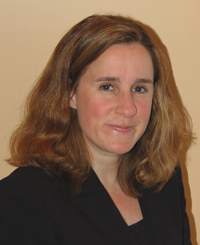The map shows 40 jobs from entry, mid and advanced levels across four industry sectors: manufacturing, system design, project development and installation/operations, and it identifies more than 60 routes to advancement among them.
The IREC Solar Career Map
Laure-Jeanne Davignon | IREC
Can you give us a quick rundown of what IREC's Solar Career Map is and what it is used for?
 It’s an easy-to-use interactive tool that delves into the ever-expanding list of diverse solar-energy occupations, charts possible progression among them, and describes the sorts of education and credentials necessary to do them well. That’s the short answer.
It’s an easy-to-use interactive tool that delves into the ever-expanding list of diverse solar-energy occupations, charts possible progression among them, and describes the sorts of education and credentials necessary to do them well. That’s the short answer.
How did the Map come about?
The Map emerged from a simple vision: that high-quality work and high-quality jobs are inseparable. Excellence is not only possible, it’s absolutely necessary. This is how you build a growing solar industry. IREC's new Solar Career Map is actually a super, video-enhanced, interactive offspring of its 2011 predecessor – the work of the Solar Instructor Training Network (SITN). IREC was the national administrator of SITN for the past five years. Funding for the Map comes from DOE’s SunShot Initiative.
How does it work?
This is one thoughtfully designed tool. The Map shows 40 jobs from entry, mid and advanced levels across four industry sectors: manufacturing, system design, project development and installation/operations, and it identifies more than 60 routes to advancement among them. Click on any job for details like salary, training required, skills needed. You’ll also see what it takes to advance to the next level. Additional opportunities for progress and promotion can be found within any given occupation on the Map. Best of all: multi-sector pathways encourage the idea of lifelong learning and the natural evolution of skills and interests.

Why is the IREC's Solar Career Map so important?
Most people only see the folks up on the roof and they have no idea of the depth and diversity of careers now possible in this emerging industry. The map, originally ahead of its time, is now seeing its proverbial day in the sun. The extension of the Investment Tax Credit, the historic Paris Agreement and the recent impressive numbers from the 2015 Solar Jobs Census establish IREC's Solar Career Map as an indispensable ally to assure a skilled solar workforce for many years ahead.
Can anyone use IREC's Solar Career Map?
Absolutely! It’s useful for a broad range of interested people, from students and those changing careers, to transitioning military members. In fact, there’s a special section in the Map for veterans. With additional training and certification, veterans are strong candidates for a solar career. Their military skills translate well for electrical and mechanical technicians, logistics specialists and engineers. The Map features five short videos with 18 solar professionals to put real faces behind the information. The videos, one of the most popular elements of the Map to date, are organized around five key themes: jobs, skills, pathways, training/credentials and careers. From rooftops to boardrooms, in classrooms and utility control rooms, there’s something for everyone in solar.
Who is IREC and what does it do?
We’re a three decades+ 501(c)(3) non-profit with a strong history of shaping regulatory reform and workforce development in the clean energy space, including a distinguishing credentialing program for training providers and instructors. We’re known for identifying issues before they become issues and bringing the talent together for transformational results. For more information: www.irecusa.org and www.irecsolarcareermap.org

About Laure-Jeanne Davignon, IREC Director of Workforce & Credentialing
Laure-Jeanne has worked with the IREC team for more than five years. She currently serves as Director of Workforce and Credentialing, managing oversight and contributing to the strategic direction of those efforts. She also manages IREC’s standards development and revision activities. Her experience spans education and nonprofit management, first in higher education and then as an association executive for the residential building supply industry. She resides in upstate New York, where she is involved in community solar efforts in her rural town
The content & opinions in this article are the author’s and do not necessarily represent the views of AltEnergyMag
Comments (0)
This post does not have any comments. Be the first to leave a comment below.
